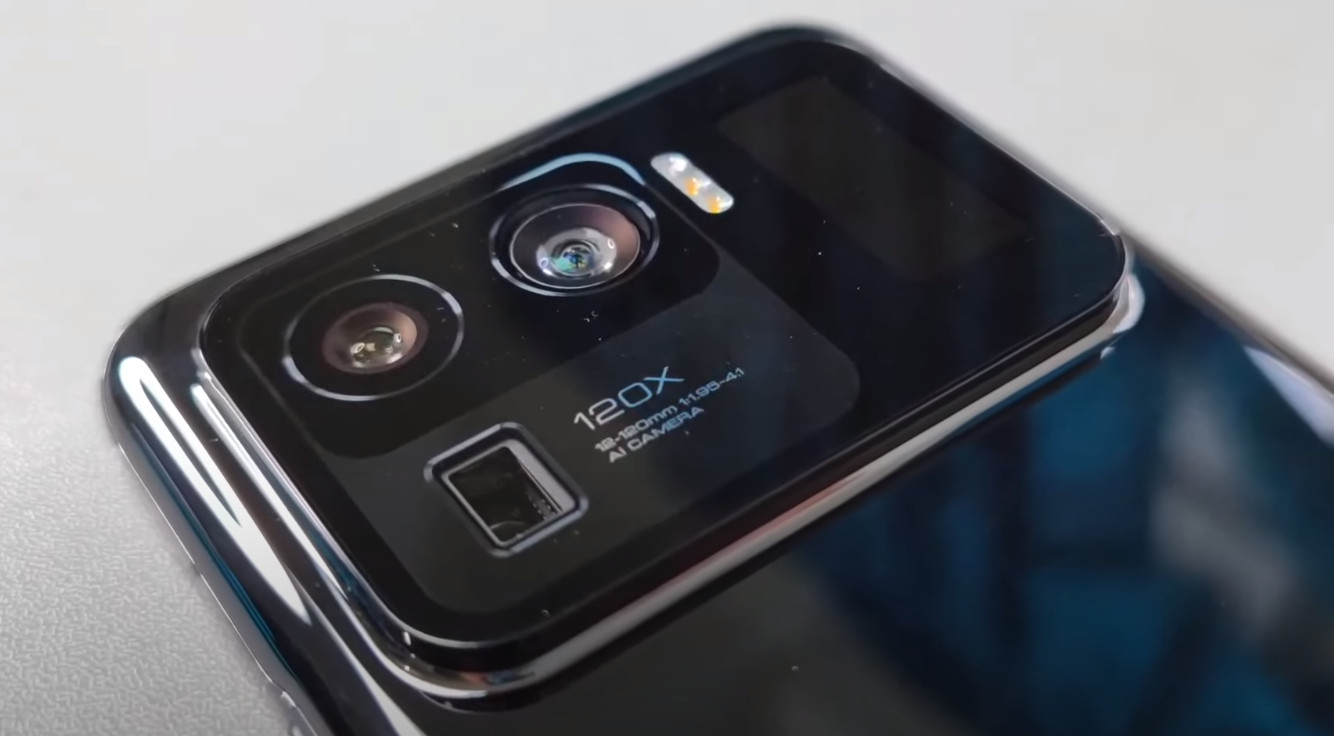Affiliate links on Android Authority may earn us a commission. Learn more.
Have smartphone camera bumps gotten out of control?
Published onMarch 30, 2021
The Xiaomi Mi 11 Ultra packs a whopper of a smartphone camera module. Not only does it contain multiple lenses, but it also contains a 1.1-inch OLED display to help you capture that perfect selfie. Oh, the vanity. This is the phone to get if you want to accidentally fall off a cliff while taking a picture of yourself. Hey, at least the shot will turn out good.
But seriously, a selfie screen? What will phone makers think of next? To be fair to Xiaomi, this isn’t a completely pointless rear screen like the one seen on the recent ROG Phone 5 Ultimate. Instead, the Mi 11 Ultra’s rear-mounted display, which pushes the size of the smartphone camera module from merely obnoxious to obscene, does a bit more than help you frame your shot. It also serves as an always-on display that shows the time and it can reveal notifications.
See also: The best camera phones you can get
The Xiaomi Mi 11 Ultra is only the latest phone to overdo the rear camera arrangement. We get why. Camera sensors are growing bigger and bigger each year. That’s a good thing for your photos. Bigger sensors can capture more light, which means faster shutter speeds and sharper photos. The lens arrangements common on today’s phones are becoming more and more complex. Your typical smartphone camera module has a half-dozen lens elements sitting in front of the sensor. Those elements require physical distance.
For more on why camera bumps are getting so large, be sure to check out our article linked below and the video above where we go into greater detail. The TL;DR is that currently smartphone makers that want to deliver a bleeding-edge camera experience are left with a conundrum: make the whole phone really thick, or just the part containing the camera bits. It’s obvious the route they’ve taken — for now.
Read more: Why are smartphone camera bumps becoming so huge?
At the moment, Samsung is perhaps the worst offender. Last year’s Galaxy S20 Ultra and this year’s S21 series as a whole have gargantuan camera modules. The rear panels are absolutely dominated and defined by the chunky camera blocks. The S20 Ultra, in particular, featured a periscope zoom camera, so it really needed the real estate, though I’m not sure the 100x Space Zoom was worth the extra bulk. Other gawky camera modules appear on phones including the Apple iPhone 12 Pro Max, the standard Xiaomi Mi 11, and the realme 8 Pro. HUAWEI looks set to take things even further with the P50 series, too.
Phones that have managed to include multiple lens camera systems and cram them into palatable camera modules include the likes of the Google Pixel 5 and the OnePlus 9 Pro.
Then there are smartphone camera modules like that of the OPPO Find X3 Pro. Rather than force a clunky, utilitarian design into our hands, the company integrated the large camera module beautifully. No other camera module is this attractive. Well done, OPPO.
There’s no doubt we want our smartphones to have the best possible cameras. Camera quality and performance have become top features for potential buyers, and the competition is fierce. With each passing year we see higher and higher megapixel counts, more creative lens configurations, as well as powerful flashes, microphone arrays, and even laser focusing systems. These all demand bigger camera modules.
When will camera design dictate phone design itself?
The question becomes when will camera design dictate phone design itself? Will phone makers introduce material changes to the slab-style device in order to accommodate high-tech camera systems? What would that look like? Would consumers go for it?
We’ve seen some examples. The Nokia PureView 808, from way back in 2012, is one such device. The 808 placed emphasis on the camera design, which led to a chunky phone. Then there was the Samsung Galaxy S4 Zoom, which was definitely a camera first and a phone second. These devices compromised the phone experience to provide better imaging, though neither was a true market success. And therein lies the rub.
Related: Compact camera vs smartphone shootout — it’s not even close
Smartphone buyers prioritize devices with big screens and thin profiles. As long as that’s what consumers want, phone makers will give it to them. Point-and-shoot cameras are already a dying breed in the world of photography anyway, ousted by the high-quality cameras we now carry as part of our phones. There’s little point for modern phone makers to bring back the 808 or S4 Zoom form factors.
But that doesn’t mean phone makers can increase the size of the camera module with every passing generation. Is there a tipping point? What is too big? Eventually, we’ll reach a point of diminishing returns. Until we do, I expect to see smartphone camera modules continue to grow in size and complexity.
What do you think?
